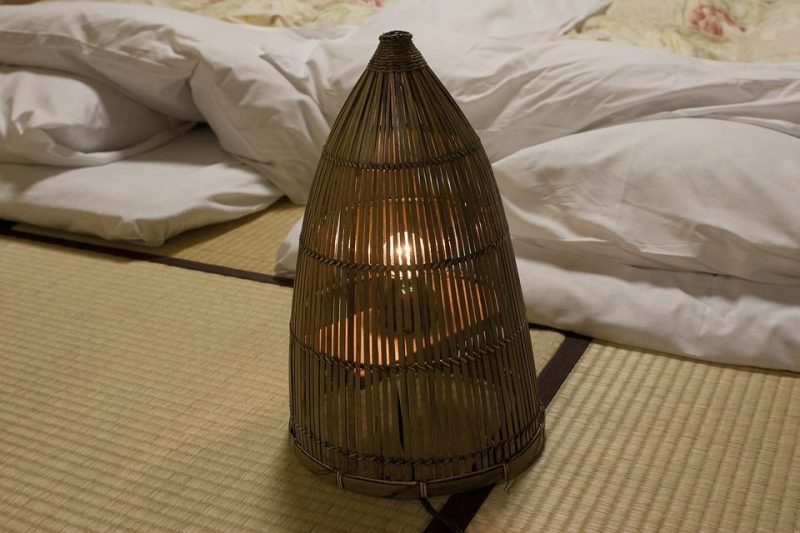If you want to know how to make a futon mattress, you’ll be done in two steps! This versatile bed that originated in Japan is actually a doable project at home. Continue reading this article to get started!
But why a futon? As mentioned, this mattress’s size is versatile, and you can use it as a sofa during the day and as your bed at night. You’ll even be more surprised how easy it is to make one!

How To Make A Futon Mattress At Home
Step #1. Select and prepare the materials
The process of making a futon mattress is straightforward, and perhaps the trickiest part is the first step, which is gathering your materials. You want to remember that a futon mattress comes in different sizes, so you must adjust your material measurements accordingly. Once you know how big you want the futon will be, you can shop for materials like fabric cover, foam, or batting.
The good news is most shops will cut these materials for you according to the dimensions you want. Remember that they must provide the firmness, weight, and flexibility that would be ideal for your futon. Your cover should also be useful in protecting your futon, and it should be easy to wash and remove for maintenance.
As you will read in the next step, the first cover you’ll make will serve as the batting or stuffing liner. You’ll sew it shut completely to protect the inner materials. And using the same sewing technique, you’ll make a similar liner with a zippered or buttoned end to make it removable for cleaning.
Step #2. Construct the futon mattress
For a typical futon mattress, you’ll stack several batting sheets or foam fillers according to the height you want. Once done, tuft the stack to help the layers stay put using an upholstery needle and thread. If your futon is thick, you can tuft a few layers at a time and then fasten the adjacent layers at the corners.
How do you make the cover? Cut two rectangular fabric pieces and sew their right sides together, keeping one side open to turn the cover right side out afterward. As if you’re making a pillow cover, fold the raw edges of this opened side and hem.
Finally, you’ll just stuff it with the layers you made, making sure that there is no excess space on the corners. Then, blind-stitch the remaining end of this liner as this will act as the filling protector. As for the outer cover, you can finish its open end with a zipper or buttons so that it’s easy to remove for washing.
What Can I Use As A Futon Mattress?
Batting
Perhaps the most common material used for futons is batting. The guide above is applicable if you want to use several cotton batting layers and make a 100% cotton futon mattress. The resulting bed will be heavy, but it will have good flexibility for folding.
Foam
Besides cotton batting, you can also use cotton foam. It won’t be as flexible, but it will have better rigidity depending on the thickness and density. You can also opt for other foam types such as latex and memory foam if you want a contouring bed.
Other common materials
Futon mattresses are not limited to cotton, and you can even combine what you make with polyester or wool. Some users also prefer a 100% polyester or 100% wool futon mattress to lessen the bed’s overall weight. The deciding factor varies for every individual, be it the budget or ideal feel for sleep.
How Thick Should A Futon Mattress Be?
When making a futon mattress, you have full control over its overall structure. However, it’s worth noting that you want to reach a certain thickness to get the most of your futon. For example, you can make your futon around 8 inches thick, if you’ll use it on a bi-fold frame.
On the other hand, you want something thinner, around 6 inches if you’ll place the futon on a tri-fold frame. You don’t want to go under 5 inches for a futon to ensure that it will be easy to fold and comfortable to use, regardless.
Considerations when making a futon
As briefly mentioned earlier, you want to get the materials to provide your ideal firmness, weight, and flexibility for the futon. Firmness matters because it dictates the overall feel you’ll get, while weight can affect the mattress’s substance and durability. Flexibility is also something to consider because most use futons as sofas as well.
However, you also want to check if your futon will be rigid. Will it keep its shape and not get affected by gravity as quickly? The mattress should also be thick enough so you won’t feel the frame underneath when in use.
Conclusion
You can put your DIY skills to good use and make a futon at home. What’s great with this project is learning how to make a futon mattress only takes two easy steps. And best of all, you won’t need any special tools from start to finish.
A quick recap of the guide above is to stack several batting layers or foam to achieve your desired mattress height. Sew and tuft them in place and then stuff them in a liner. Sew the cover shut, and finally, make another cover with an opening for quick removal and clean-up.
